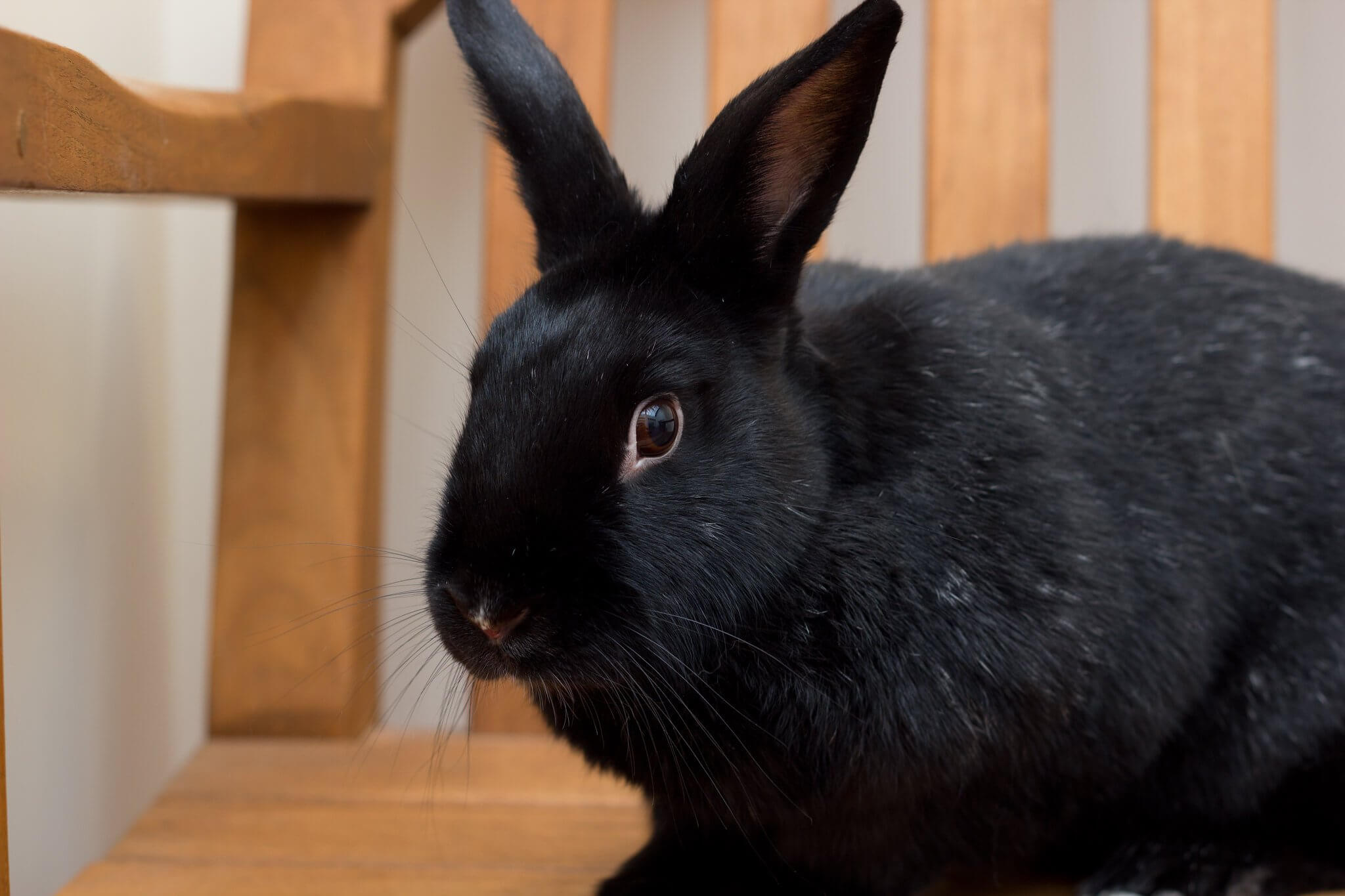- COUNTRY OF ORIGIN: Netherlands
- YEAR RECOGNIZED: 1914
- USES: Show, fur, meat
- WEIGHT: 6.5 pounds (3 kg) max., senior bucks and does
- BODY TYPE: Compact
- FUR TYPE: Flyback; ARBA Commercial Normal Fur Standard; soft, dense, lustrous
- COLORS: Black, blue, chocolate, broken (white with black, blue, or chocolate markings)
THE COMPACT HAVANA’S NAME suggests Cuban origins — and there is a somewhat tangential connection — but the breed was born in the Netherlands, in a rather modest way. A chance mating between a black-and-white “farm rabbit” and another nondescript rabbit in Ingen in 1898 apparently produced a fascinating litter featuring brown and white kits. The dark brown fur intrigued established rabbit breeders, who stabilized the color with subsequent experimental breedings and in 1899 introduced a new breed they called Castor (the scientific name for the beaver) because of the dark brown color and lushness of the fur.
When Jeanne J. Lamaire showed the beaver-colored rabbits in Paris in 1903, she employed the name “Havana,” a reference to the dark tobacco leaf of Cuban cigars. It is questionable, of course, whether cigar leaf is any more evocative than the name of a large aquatic rodent, but “Havana” stuck, and even major political differences between the United States and Cuba weren’t enough to change it.
Havanas reached the United States by 1916, and Havana clubs arose by the 1920s. Eventually the breed included blues, blacks, and brokens as well as the original chocolates, which Havana owners liken to mink in both texture and color. The breed remains fairly popular in North America, beloved for its usually gentle disposition and rich fur.

